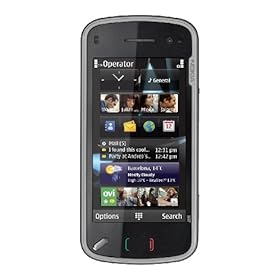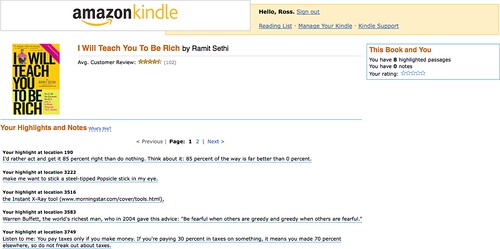 It's been confirmed that Apple has purchased Lala and rumors are flying about why they did that. Lala stores music in the cloud and streams it to a user's computer (kind of reminds me, in a way, of what MP3.com was up to before they got sued); as part of the deal, Apple gets the not only the Lala engineers, but also the founder of the company.
It's been confirmed that Apple has purchased Lala and rumors are flying about why they did that. Lala stores music in the cloud and streams it to a user's computer (kind of reminds me, in a way, of what MP3.com was up to before they got sued); as part of the deal, Apple gets the not only the Lala engineers, but also the founder of the company.This acquisition is not uncommon for Apple -- they buy a lot of small companies and really never disclose the purpose of the acquisition, though it usually becomes obvious 6-18 months later when the integrated technology gets released as a feature, component, etc. Why is Lala getting so much attention?
I don't mind storing my music locally. Broadband speeds to my house are at the point where it just doesn't take all that long for me to download a track or album from iTunes; storage is cheap and gets continually cheaper, so there's not much overhead in storing it. All of my music gets (and everything else on my computer, for that matter) gets backed up for around $4 per month. My music does not necessarily need to be available to me everywhere -- I've got all the music that I want to listen to on my iPhone (it's still got half of its storage empty) and even more music on my laptop (still 60gb free at last count); I'm not sure that I necessarily need to be able to stream music to my laptop and there are places I want music where there is not an internet connection.
But maybe I'm wrong.
The model of needing to own music is probably fundamentally flawed. Subscribing to music is likely going to need to be the model of the future. All of the platforms that I mentioned above -- my home computer, my laptop, my iPhone -- are all platforms that could receive a stream of music, especially as broadband gets more pervasive, and its probably worthwhile to note that all of my platforms carry that little Apple logo and all my current consumption is through iTunes. I've currently got over 30,000 individual songs in my collection, which is a lot, but will never hold a candle to the over 8 million songs currently available on Lala.
And what about the obscure music that Lala doesn't have? Well, they have their "Music Mover" utility for that. I'm not going to claim that I fully understand the technology behind it, but I'm going to guess that just as MP3.com's (pre-lawsuit) utility used to scan the zero track of a CD for identification information and would match against tracks already in their database to give you a 30 second virtual "upload", the Music Mover probably scans ID3 tags, compares them to music in the database, and gives you access to what is already on the Lala servers, actually uploading only what is not already there. Music Mover solves the problem of what to do my entire music collection that I've already got, which is probably my biggest hesitation of moving to an on-demand, streaming model.
Let's go back for a second to my statement about pervasive broadband because that infrastructure is what will ultimately be the reason that streaming succeeds (or fails). AT&T is the current data provider for iPhones in the United States and we've all seen the "map for that" Verizon ads that contrast high-speed data coverage between their networks. If you're like me, one of my big frustrations with satellite radio is when it doesn't work, which, even on Verizon's network, is still a possibility. With physical audio tracks existing on my laptop, iPhone, etc. it does not matter if the data network is reliable; my limiting factor is simply battery life. The big question/challenge for streaming right now is whether or not the technology is adaptable enough to deal with network outages without me knowing about it.
But then again, maybe Apple is simply after something more simplistic.
Maybe the Lala purchase is just to add additional value to an iTunes store purchase -- buy the track for $0.99 and you can download it, buy it for $1.19 without DRM, or buy it for $1.50 and you can download it and stream it as much as you want on the web.
That sounds pretty boring though.



































